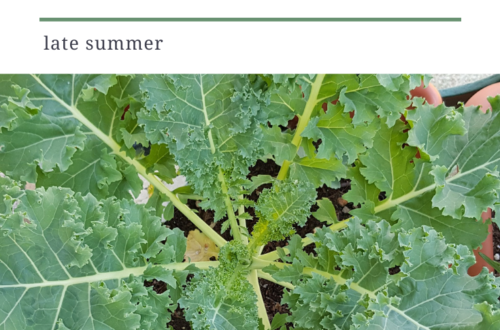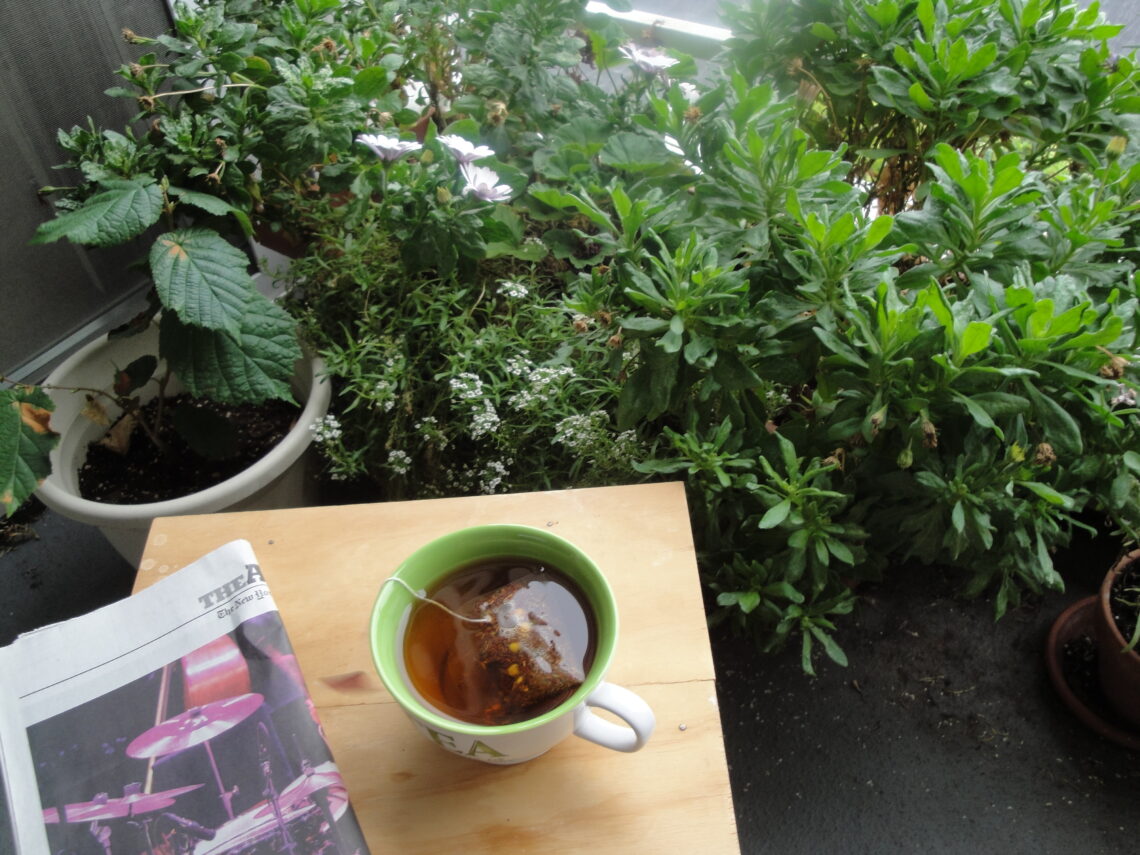
Growing a Tiny Garden Anywhere
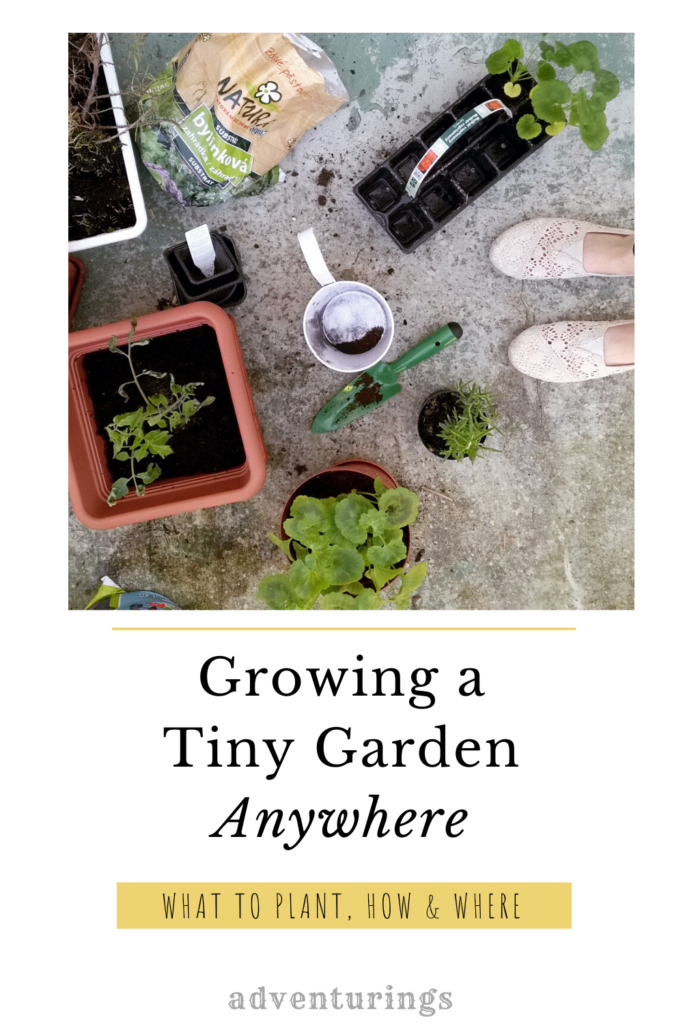
I’ve always wanted to grow my own herbs and vegetables… but I don’t truly believe in the term “green thumb”. I think anyone can garden if, and only if they truly care enough about it and try as hard as they can and put in the time to do it well. Just like caring about how the food tastes and looks makes you a better cook almost automatically. If you are patient, have keen attention to detail about what your plants like or don’t like and are proactive, you can garden.
Gardening makes us self-sufficient. It is a natural companion for people who love to cook (or who, at least, love fresh and flavorful ingredients). You rely on yourself, not establishments or companies. You get to provide for your family through your own hard work. I think that’s about one of the coolest things around.
Now that it’s March and spring is nearly upon us again, I want to talk about tiny gardening for people that don’t have a garden space or backyard for which to grow what they want in. (Until last spring, this was me!) A lack of outdoor space doesn’t have to be the end of the gardening dream because, good news, you can absolutely grow herbs and vegetables not only on a balcony, patio, or terrace space but even in a freakin’ windowsill. Whether you live in a house, a dormitory, a seventh-story flat in the city, whether your situation is permanent or temporary – none of that matters if you can figure out how to best utilize your outdoor or sunny spaces.
So, let’s talk about balcony (or patio, terrace) spaces. The biggest factor is how much sun your outdoor space gets. The good news is if your space faces literally any direction except north, you can grow so many things out there. South, and you can plant the most sun-loving plants which don’t have a huge root system, like tomatoes. (Oh, I once had a southern-facing balcony in Seattle and it was heaven!)
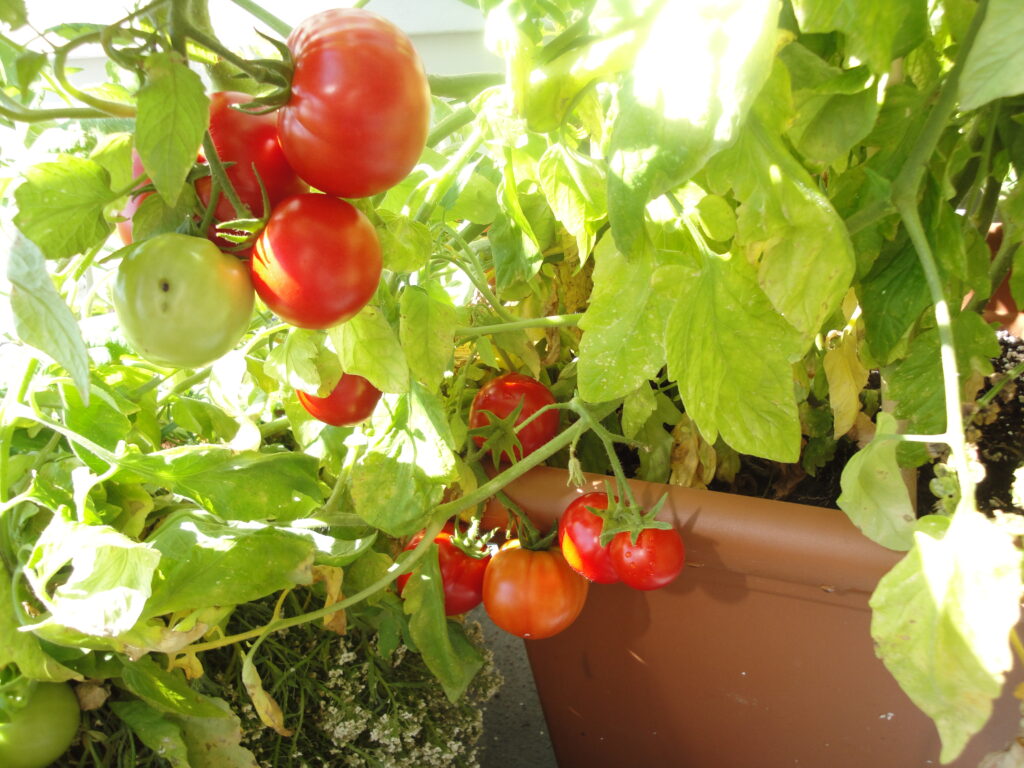
Shade-Tolerating Plants
My big challenge in the past few years has been with my northern-facing balcony. The thing is, things will grow out there… just not very big. Thusly, one would ostensibly need to choose shade-loving vegetables which include basically all lettuces and Swiss chard and some shade-tolerating brasiccas like kale. Shade-tolerating herbs I’ve had success with include thyme, rosemary and even lavender (with only scant hours of sun per day). I think my thyme did better in the shade than in the sun, honestly. With really shady spaces, it’s best to set your expectations low and don’t expect miracles. I feel it’s better that not trying to grow anything!
When it comes to my flower boxes, I’ll share with you my little trick: I stick them in a sunny windowsill until they bud sufficiently, then when they look alright, I’ll stick them out on the shady balcony for a few weeks (where they totally will not thrive but they will look good!), and finally place them back in the sun to charge when I notice they could use a little love (and repeat through the summer).
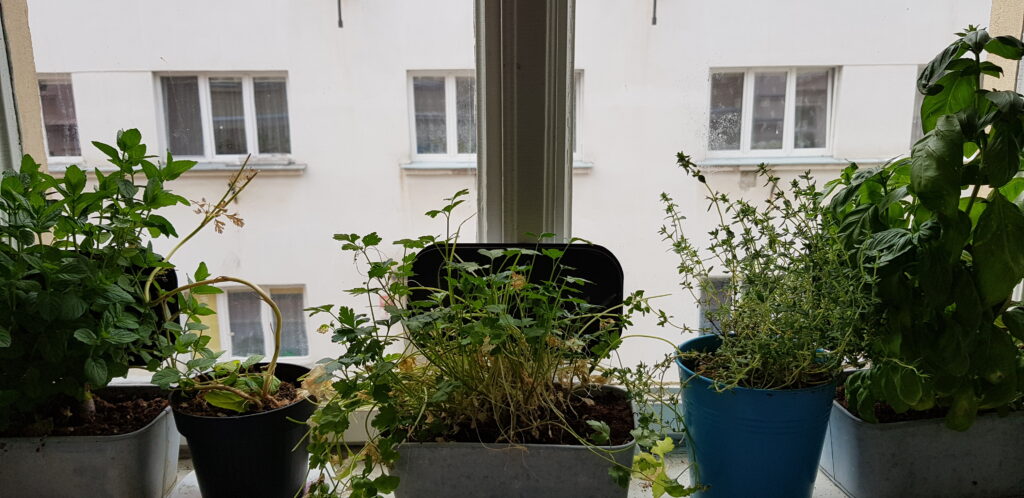
Windowsill Gardening
If all you’ve got are sunny windowsills, you can still do so much! You have sun! So many herbs do excellently in pots, and I’ve even successfully grown lettuce and radishes as well in a long flower planter. Anything that doesn’t need much space or a deep pot (which would rule out squashes and root vegetables) is fair game. Think of all the lettuces you could be eating from spring ’till fall!
Here are some ideas for vegetables or herbs that do great in a container:
- sage – Great for frying in butter and adding to a dish, for tea
- basil – Think of the caprese salads and spring rolls you will have
- mint – From lemonades to tea to Southeast Asian or Moroccan dishes, mint is easy to grow & delicious
- thyme – Very often used in cooking, gives soups wonderful flavor
- parsley – What Central European dish would forsake parsley?
- rosemary – Similar application as dishes with thyme, great fried in butter and used in soups, stews or sauces
- lavender – It’s beautiful, smells great and has loads of interesting applications
- aloe vera – If you’ve ever terribly burned yourself, you’ll know that this is a lifesaver to have on hand
- lettuces – Unlimited salads on-tap
- radishes – Nutritious, bitter and good for digestion, add to an appetizer or salad
Consider what you like to use with your cooking the most, or what you tend to need to buy at the store often. A cook that makes a lot of Thai or Mexican dishes may want to choose coriander/cilantro (despite the fact that this plant is so persnickety and I’ve never had any luck with it, but maybe you will!).
If you try growing vegetables in windowsills (why not?), try to use the biggest container which will fit. I have used long flower boxes and had great success — just sure to fill them nearly to the brim with soil so the root systems have the largest possible area for which to grow (especially important for the radishes).
What would be totally next-level is buying a metal garden-type shelf to stick in your window so you have not only the bottom sill-level but several levels for as big as your window is! Been scheming about doing this for awhile but still searching for that perfect shelf…
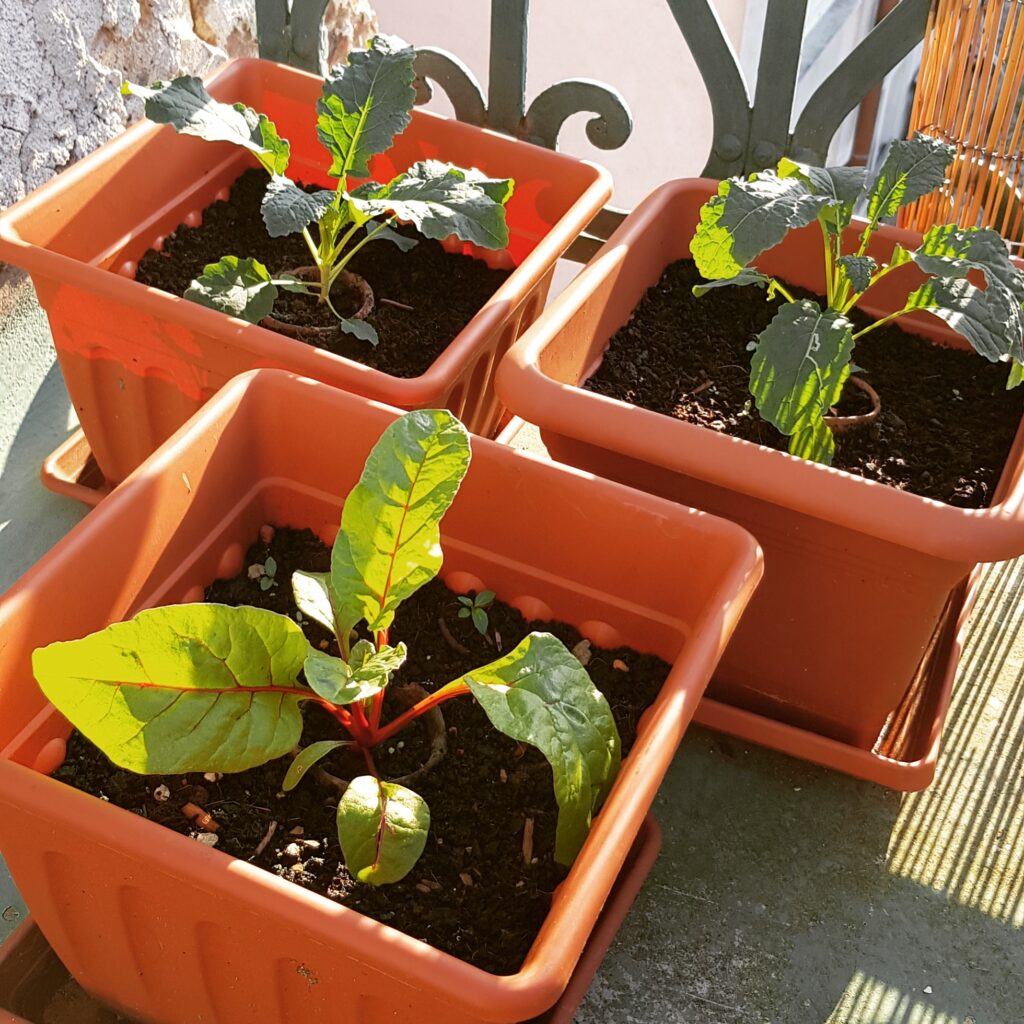
Tiny Gardening Essentials
- large containers or tubs which have drainage holes
- pots (various sizes) with drainage holes which fit on your balcony – use the largest size you can manage, space-wise to allow for growth
- compostable planting cups (for starting seedlings in a windowsill)
- a trowel
- good quality potting soil or access to compost
- gardening gloves (optional)
- water until water runs out of the pot, water only when soil is dry again (to avoid molds or fungus)
The Water Situation: Eco-Friendly Tips
Everyone knows how much water all your plants suck up in the spring through the fall, but I always feel like it’s a shame to water them with tap (drinking) water. In the last few years, I’ve got creative with two main ways to collect water that would just go to waste anyway. The first: keep a small bucket in the bathroom by the shower. Every time you turn on the tap and wait for it to turn warm, put the bucket under the tap and catch all of that cool/cold water that would just go down the drain anyway (unless on the off-chance that you enjoy cold showers).
The second thrifty, eco-friendly way is to catch all of your “grey water” after you cook pasta. When I cook pasta in the warmer months, I won’t salt the water so I can catch all of that starchy water that would otherwise go down the drain, pour it into another pot, and wait for it to cool to room temperature before using it to water plants. The starchy pasta residue actually contains nutrients the plants won’t mind soaking up!
Thirdly, if you are lucky enough to have access to an outdoor space, why not invest in a rain barrel which you affix directly below the gutter of your house, shed, garage, etc to catch all that good, free rain water and put it to use.

One last plant-related thing before I leave ya which will concern all of my fellow garden buddies and herbie homies — The Herbal Academy (where I have studied herbalism) is coming out with their first ever (online) course all about mushrooms, taught by some pretty amazing teachers who really know their thing, and I am pretty excited about it. Click on the banner to find out more information and for a chance to possibly win tuition to the course.

What do you grow in your outdoor space or on your windowsills? Anything you’ve had luck with, good or bad?
PS, you might like Herbalist in Training or How Does Your Garden Grow.


